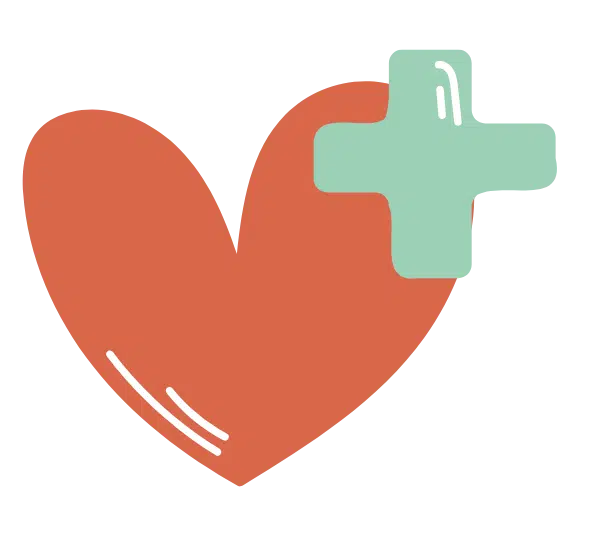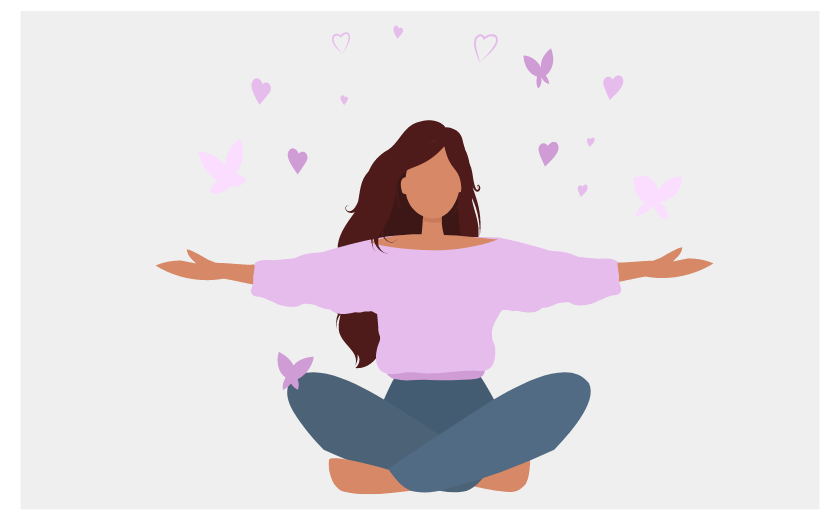» Physical and mental well-being
8 Strategies to Reduce Anxiety
Introduction
Anxiety, a condition that quietly threads through the fabric of our lives, affects us all at some juncture, touching each person distinctly [1]. It spans a spectrum, from generalized anxiety disorder and panic disorder to social anxiety and specific phobias, revealing the nuanced nature of mental health [1].
As I ponder on my journey with anxiety, I recognize that acknowledging the diverse manifestations of anxiety symptoms is pivotal in navigating the path to management and healing [1].
In the quest for serenity and balance, understanding the gravity of anxiety as a common mental health condition that reaches millions globally becomes a cornerstone for fostering a supportive environment for ourselves and others [1].

In weaving through the narratives of my own experiences, I’ve discovered that the initial step to mastering how to calm anxiety lies in embracing mindfulness meditation, engaging in physical activity, and practicing breathing exercises [1].
These strategies not only offer a refuge from the storm but also serve as beacons, guiding toward a horizon of tranquility [8]. Bridging the gap between enduring unease and finding peace involves a tapestry of interventions, from Cognitive-Behavioral Therapy (CBT) and medication to the simple, yet profound, acts of nurturing a healthy diet and reducing caffeine intake [7] [8].
As I share this reflection, I extend an invitation to journey together toward understanding how to decrease anxiety, with the assurance that amidst the complexity of our battles, there lies simplicity in the solutions offered — a testament to life’s intricate balance [7] [8].
Tip #1: Recognize and Accept Your Anxiety
In the labyrinth of our minds, anxiety often emerges as both a guardian and a captor, signaling alarm for potential dangers while simultaneously binding us in chains of worry [2]. Recognizing and accepting anxiety is not an act of surrender but a step towards empowerment. Here’s how:
- Acknowledge Anxiety’s Dual Role: Understand that anxiety can be a motivator, urging us to accomplish tasks and face challenges, yet it can also overwhelm us when it signals false alarms [2].
- Practice Acceptance: Accepting anxiety involves recognizing its presence without judgment. This doesn’t mean liking or approving of the anxiety, nor does it equate to defeat. Instead, it’s about reducing additional suffering by not fighting against the anxiety, thus taking back control [2].
- Engage in Mindful Observation:
- Name and Label: Identify and label your physical sensations and anxious thoughts without judgment, giving them a name or visual representation [2].
- Self-Compassion: Meet these thoughts with kindness and use your values as a source of empowerment [2].
- Grounding and Journaling: Utilize grounding techniques to stay present and turn towards your feelings through journaling, providing insights into your anxiety’s roots and purposes [2] [4].
By weaving these practices into the fabric of our daily lives, we not only acknowledge the complexity of anxiety but also embrace the simplicity in managing it. Through acceptance, we find a pathway to soothe our minds, guided by the wisdom that anxiety, in its essence, is a natural response mechanism designed to protect us [4].
Tip #2: Implement Mindfulness and Meditation
In the heart of managing anxiety, mindfulness and meditation emerge as serene harbors amidst tumultuous waves. These practices invite us into a space of present awareness, where the clamor of anxious thoughts can be observed with detachment and compassion.
Mindfulness Meditation:
At its core, mindfulness meditation encourages us to anchor our attention to the present moment, focusing on our breath or a chosen object of meditation. This practice, supported by research, has shown efficacy in alleviating symptoms of anxiety, depression, and pain [9].
By fostering an attitude of acceptance towards our current experience, without entanglement in past regrets or future worries, mindfulness meditation offers a pathway to emotional equilibrium [14].
Autoregulation Techniques:
- Deep Breathing: Engaging in deep breathing exercises, where we inhale slowly, hold our breath, and exhale while mentally whispering ‘relax’, can significantly dampen the physical manifestations of anxiety, calming our heart rate and blood pressure [10] [14].
- Progressive Muscle Relaxation: This technique involves a conscious tensing and relaxing of different muscle groups, promoting a deep sense of physical relaxation that can counteract the tension borne of anxiety [10].

Mindfulness-Based Interventions (MBIs):
Encompassing practices like Mindfulness-Based Stress Reduction (MBSR) and Mindfulness-Based Cognitive Therapy (MBCT), MBIs integrate mindfulness principles into cognitive-behavioral frameworks.
These 8-week programs have been validated for their effectiveness in reducing anxiety and depression symptoms, offering comparable benefits to traditional cognitive-behavioral therapy (CBT) [13].
Moreover, MBIs, including practices such as yoga and meditation, not only enhance mood and self-esteem but also cultivate resilience, providing a robust toolkit for navigating the ebbs and flows of anxiety [16] [17].
Through these avenues, mindfulness and meditation extend an invitation to transform our relationship with anxiety, shifting from one of resistance to one of acceptance and understanding.
Tip #3: Physical Activity: A Natural Anxiety Reliever
Embarking on the journey to ease anxiety through physical activity, I’ve come to understand its profound impact on mental health. Regular engagement in exercises such as walking, biking, or yoga not only alleviates stress but also introduces a sanctuary of tranquility within the tumult of anxious thoughts [18].
The recommendation of at least 2.5 hours of moderate-intensity physical activity per week serves as a beacon, guiding towards a balanced mental state, while setting small daily goals and finding enjoyable forms of exercise ensure a sustainable and enjoyable routine [1].
- Aerobic Exercises: Activities like cycling, dance classes, and brisk walks are lauded for their efficacy in managing chronic anxiety. These exercises, by diverting attention from the source of anxiety, decreasing muscle tension, and changing brain chemistry, foster a sense of resilience against emotional upheavals [19].
- Mind-Body Connection: Engaging in tai chi, high-intensity interval training, or even a single session of exercise can significantly ease anxiety symptoms. The key lies in finding activities that elevate the heart rate and, if possible, engaging in these activities with a friend or group for added support and social interaction [19].

The intertwining of physical activity with mental well-being is further enhanced by the release of feel-good endorphins and the cultivation of increased confidence and healthier coping mechanisms.
This holistic approach not only improves mood but also contributes to a comprehensive strategy for managing anxiety, underscoring the importance of incorporating regular exercise into our lives [20
Tip #4: The Role of a Healthy Diet in Managing Anxiety
As I delve deeper into the realms of managing anxiety, I’ve discovered the profound impact of a healthy diet on our mental well-being. The journey towards tranquility is not just about the mind but also about nourishing the body with the right nutrients.
- Balanced Nutrition: Embracing a diet rich in whole foods, while minimizing ultra-processed foods and added sugars, lays the foundation for stress resilience [25]. A study titled “Diet and Anxiety: A Scoping Review” illustrates the positive correlation between consuming fruits, vegetables, omega-3 fatty acids, and maintaining “healthy” dietary patterns with reduced anxiety levels [27].
- Key Nutrients: Incorporating foods high in magnesium, zinc, and omega-3 fatty acids is pivotal. Magnesium-rich foods like leafy greens and nuts, zinc-rich foods such as oysters and beef, and omega-3 fatty acids found in fatty fish like wild Alaskan salmon have all been linked to lowered anxiety [5].
- Mindful Consumption: Limiting or avoiding caffeine and alcohol due to their potential to exacerbate anxiety symptoms is crucial. Additionally, staying hydrated and eating regular meals to prevent blood sugar drops can significantly impact mood stability [5] [28].
The intricate dance between our diet and mental health underscores the importance of mindful eating. By fostering a balanced diet, we not only fuel our bodies but also arm ourselves against the tumult of anxiety, paving the way for a serene and balanced existence [5] [25] [28].
Tip #5: Building a Support Network
In the tapestry of managing anxiety, weaving a robust support network forms an essential thread, enriching the fabric of our mental and emotional well-being. Recognizing the diversity and strength of our connections can be a beacon in the tumult of our anxious moments [30].
Sources of Support
- Family and Friends: The cornerstone of any support network, offering a reservoir of emotional and practical assistance. Cultivating positive relationships with them can provide a sense of security and belonging [30].
- Colleagues and Acquaintances: Beyond personal life, these connections can offer support in achieving educational and career goals, enriching our sense of accomplishment and purpose [30].
- Online Communities and Local Groups: From social media to community volunteering, these platforms offer avenues to connect with like-minded individuals, fostering a sense of community and shared interests. Engaging in activities such as group sports, crafts, or book clubs can significantly reduce stress and promote mental health [23] [30].
Establishing a multifaceted support network is akin to cultivating a garden; it requires nurturing diverse relationships that can provide different perspectives and forms of support. Engaging regularly, offering your strengths, and seeking mutual growth can fortify these bonds, enhancing our resilience against anxiety’s ebbs and flows [30] [31].
Tip #6: Utilize Stress Reduction Techniques
In the journey towards mastering how to calm anxiety, I’ve learned that integrating stress reduction techniques into my daily routine serves as a powerful strategy. These techniques are not just practices but a form of self-compassion, a way to gently remind ourselves that amidst the chaos, finding moments of peace is not only necessary but deserved.
- Breathing Exercises: One of the simplest yet most effective methods I’ve adopted is focusing on my breathing. Taking slow, deep breaths helps reset the nervous system and decreases the intensity of anxiety symptoms. It’s a tool that’s always accessible, requiring no special equipment or environment.
- Scheduled ‘Worry Time’: Instead of allowing anxiety to consume my entire day, I allocate a specific time to process my worries. This technique helps in compartmentalizing anxiety, making it more manageable and less intrusive on my daily life.
- Visualization and Positive Imagery: Engaging in visualization exercises, where I imagine myself in a serene and happy place, has been instrumental in reducing stress. This practice not only diverts my mind from anxiety-inducing thoughts but also brings a sense of calm and positivity.
Incorporating these techniques has not only shown me how to decrease anxiety but also illuminated the path to a more balanced and mindful existence. By dedicating time to practice these strategies, I’ve noticed a significant improvement in my mental health and overall well-being.
Tip #7: Incorporate Hobbies and Activities
In the tapestry of managing anxiety, incorporating hobbies and activities emerges as a vibrant thread, weaving patterns of joy and tranquility into our lives.
Behavioral activation, a technique from Cognitive Behavioral Therapy (CBT), encourages us to schedule activities that anxiety might be holding us back from [15].
This approach not only diverts our attention from anxious thoughts but also fosters a sense of achievement and self-confidence [16].
Creative Outlets
- Journaling allows for the expression of emotions and the creation of order amidst chaos, helping to identify and counteract negative self-talk [16].
- Cooking serves as a creative pursuit that can boost mood, reduce anxiety, and encourage healthy eating habits [16] [23].
- Coloring and Painting offer a return to the simplicity of childhood creativity, fostering mindfulness and a break from life’s complexities [16] [17].
Engagement and Exploration:
- Photography presents limitless opportunities for creativity, offering both social and solitary avenues for exploration [16].
- Gardening connects us with nature, providing psychological benefits and the joy of nurturing life, whether indoors or outdoors [16] [23].
- Learning New Skills such as a language or musical instrument, not only diverts the mind from anxiety but also brings a sense of accomplishment and personal growth [23] [17].
Embracing these activities not only introduces positive stress, known as eustress, but also aids in understanding ourselves better, improving our overall health, and enhancing self-confidence [16]. Through these pursuits, we find moments of peace and fulfillment, crafting a life rich with creativity and exploration.
Tip #8: Adopting Cognitive Behavioral Techniques
In the realm of cognitive-behavioral therapy (CBT), a multifaceted approach is employed to tackle the complexity of anxiety. The journey begins with identifying what triggers your anxiety, a crucial step in understanding and managing its impact on your life [1].
This knowledge paves the way for facing fears, a method proven to gradually reduce anxiety over time [4]. The essence of CBT lies in its structured, goal-oriented process, typically spanning 8 to 20 weekly sessions, designed to address maladaptive thoughts and behaviors that perpetuate anxiety [36] [37].

Key Components of CBT for Anxiety Management:
- Psychoeducation: Understanding anxiety’s nature and effects [34].
- Cognitive Restructuring: Identifying and modifying negative thoughts [34].
- Exposure Therapy: Confronting feared stimuli or situations to lessen avoidance behaviors [34].
- Relapse Prevention: Strategies to maintain progress and prevent setbacks [34].
Digital solutions like Daylight offer an accessible and less stigmatized alternative to traditional therapy, breaking down barriers to care and providing support right at your fingertips [38]. Through these cognitive and behavioral techniques, individuals learn to navigate their anxiety, not by avoidance, but by understanding and confronting it, thereby fostering resilience and promoting mental well-being [34] [38].
Conclusion: Taking Steps Towards Reducing Anxiety
Throughout this exploration of managing anxiety, we’ve journeyed together through a comprehensive array of strategies designed to soothe the anxious mind, emphasizing the importance of acceptance, mindfulness, physical activity, diet, support networks, stress reduction techniques, engaging hobbies, and cognitive behavioral methods.
Each of these approaches, rooted in the understanding and mitigation of anxiety, serves not only as a testament to the multifaceted nature of anxiety management but also underscores the individual’s capacity for resilience and healing.
By integrating these strategies into our daily lives, we affirm our commitment to nurturing mental well-being and embarking on a path toward tranquility and balance.
The significance of adopting a holistic approach to anxiety cannot be overstated, as it illuminates the interconnectedness between mind, body, and environment in the pursuit of mental health.
As we reflect on these insights, it becomes clear that the journey to managing anxiety is not a solitary endeavor but a collective voyage, enriched by shared experiences and supported by the pillars of understanding, compassion, and action.
Let this exploration serve as both a foundation and a beacon for those navigating the tumultuous waters of anxiety, encouraging a proactive stance towards mental health and fostering a community of care and resilience.
.
If anxiety persists or becomes unmanageable, don’t hesitate to seek professional help. Remember, you are not alone, and there are resources available to support you on your journey towards a calmer and more balanced life.
Related post
Sources
[1] – https://adaa.org/tips
[2] – https://www.satyawellnesscollective.com/blog/cant-get-rid-of-your-anxiety-try-accepting-anxiety-instead
[3] – https://www.anxietycanada.com/articles/tool-6-r-o-l-l-with-anxious-thoughts/
[4] – https://effectivetherapysolutions.com/anxiety/youve-been-lied-to-about-anxiety-why-it-gets-worse-when-you-try-to-feel-better-and-what-you-can-do-about-it
[5] – https://www.health.harvard.edu/blog/nutritional-strategies-to-ease-anxiety-201604139441
[6] – https://www.frontiersin.org/journals/psychiatry/articles/10.3389/fpsyt.2021.598119/full
[7] – https://paintedbrain.org/blog/mental-health/how-to-build-a-support-system-when-youre-struggling-with-mental-illness
[8] – https://www.helpguide.org/articles/anxiety/i-feel-anxious-tips-for-dealing-with-anxiety.htm

